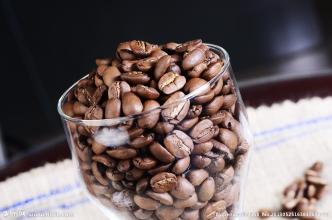The general scale of the coffee mill for grinding beans is adjusted to a few fineness values.
The general scale of the coffee mill for grinding beans is adjusted to a few fineness values.
Roughness can control bitterness is a good way to control bitterness, because the finer the grinding, the higher the extraction rate, the easier it is to extract high molecular weight astringent bitter substances such as chlorogenic acid, quinic acid, caffeine and carbides. On the contrary, if the grinding is too rough, the lower the extraction rate is, the more difficult it is to extract the astringent bitter substance with high molecular weight, but the sweet taste with middle molecular weight may remain in the coffee grounds because of insufficient extraction, which is a waste. The scale is not immutable. Do not use the same grinding scale for playing coffee. If you know that the density and baking degree of each bean are different, the required scale will not be the same. The scale of very hard beans or shallow roasting can be slightly adjusted to be finer, and the deep roasting can be adjusted thicker. If you think a bean tastes bitter and salty on scale # 3, this is excessive extraction, which can be adjusted to # 3.5 or # 4, which will significantly improve the bad taste spectrum, and vice versa. In addition, the bean grinder should be diligent in maintenance, regularly remove the knife head and remove the oil dirt inside. The knife head is consumable, and it will be dull every 800 to 1000 pounds. Remember to replace it, otherwise the grinding particles will be half-thick and half-thick, which will cause uneven extraction and damage the good flavor of coffee.
A group of new knives is about KG. According to the difference between the hardness of grinded rough and coffee beans, you can calculate the amount of coffee beans each month to determine the time of change.
When the knife is cut off, continuous use will result in poor grinding effect, the proportion of ground coffee powder will increase and cause uneven roughness, resulting in uneven extraction flow rate.
In addition, the grinding efficiency will also be greatly reduced, resulting in the easy production of ground coffee powder, resulting in the loss of coffee powder aroma.
Now we officially begin to debug the bean grinder. You need to prepare your own electronic scale, because we will unify the dose of each powder. I will also tell you some of the barista's skills when using the bean grinder to make sure that your debugging of the bean grinder is accurate enough.
The data we use comes from training courses for our internal employees. I'll tell you how we got the data. Here, I won't spend too much space on why we choose these data, because in the end, what you are after is your own exclusive formula, and this formula is best suited to your taste. But if you are a beginner, please study the data we give! The following data are used in making an espresso: the weight of coffee powder is 22g, the total weight of coffee is 36-38g, and the extraction time is 28-32 seconds.
We use this data when making espresso based on espresso and most single espresso in the store, but the data will vary if different varieties of beans are used. We will also make adjustments according to the brand of the coffee machine and the handle capacity, so if you encounter a similar situation, you also need to adjust your bean grinder in time.

Important Notice :
前街咖啡 FrontStreet Coffee has moved to new addredd:
FrontStreet Coffee Address: 315,Donghua East Road,GuangZhou
Tel:020 38364473
- Prev

What is the appropriate thickness adjustment of the bean mill?-hario bean mill thickness adjustment
Hario Bean Mill Coffee Mill is a bean grinder with a stable proportion of coarse and fine powder. at present, many famous bean grinder manufacturers have applied a lot of high technology, and its purpose is to pursue the stability of the proportion of coarse and fine powder in coffee powder. While some cheap bean grinders are far from stable in the proportion of coarse and fine powder in coffee powder, this time fine powder accounts for
- Next

Introduction to the Brand recommendation of the General scale of Grinding beans in the current Coffee Mill
In addition, the veteran will look at the color and oil production of cooked beans before deciding on the grinding degree of coffee beans. The lighter the roasted coffee is, the more complete and hard the fiber is, the more difficult it is to extract. It is appropriate to pick and grind slightly, but not too fine, so as not to highlight the sharp and sour taste. The deeper the roasting degree of coffee, the deeper the damage to the fiber, the more.
Related
- What is the Philharmonic pressure? How to use Philharmonic pressure to make delicious coffee
- Why does a hand grinder have more fine powder than an electric grinder?
- In addition to the hot mom, what is the difference between the versions of EK43 | ditting and Mahdi ek43?
- What kind of equipment do you need to make coffee by hand? Introduction to novice starter cooking equipment tools
- Espresso needs to be ground how thick and thin scale entry Italian Coffee Machine Bean Grinder investigation and Grinding course
- How much does it cost to open a small private cafe? How much does it cost to learn coffee? How to operate it?
- The difference between the flavor characteristics of hand-brewed coffee and coffee maker is hand-brewed coffee really better than coffee maker? Can I use a coffee machine to make coffee beans by hand?
- The difference between 01 and 02 of hario v60 filter cup what is the difference between 01 and 02 filter cup opening and cooking flavor
- What's the difference between the smart cup and the French kettle? Which is better, the French kettle or the Smart Cup?
- What's the difference between a smart cup and a V60 filter cup? The difference between the taste of smart cup and hand-brewed coffee

